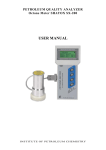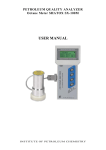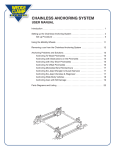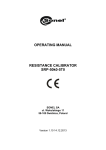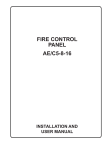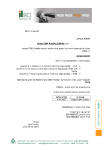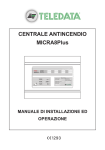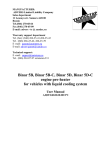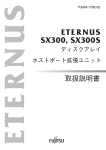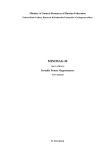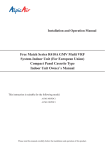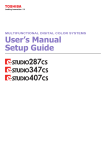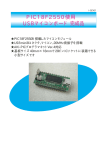Download SX-300 User Manual
Transcript
CONTENTS 1. Introduction 2. Description and operation of the instrument 2.1. Function 2.2. Specifications 2.3. Design and operation of the instrument 2.4. Package 2.5. Delivery package content 3. Use of the instrument 3.1. Operation restrictions 3.2. Making-ready 3.3. Display indications 3.4. Instrument operating modes 3.5. Procedures of operation 3.6. Making program correction of readings 3.7. Safety measures 4. Maintenance and control methods 4.1. General instructions 4.2. Control models 4.3. Instrument performance check 4.4. Instrument adjustment 5. Storage 6. Transportation 7. Product warranty 2 2 2 3 6 9 9 9 9 10 10 11 15 16 20 21 21 21 21 22 22 23 23 1. Introduction 1.1. The Operations manual for OCTANE METER SHATOX SX300 gasoline products quality analyzer is intended for studying the device and contains description of its design, the principle of operation, performance specifications, and establishes the operating rules to guarantee trouble-free work of the device. 5. Storage 1.2. Operation of the instrument does not require any special training. Nevertheless, we recommend you to study the present Operations manual carefully before starting operations of the device. 6. Transportation 2. Description and operation of the instrument 7. Product warranty The devices are should be stored in the closed package at the ambient temperature from +5ºС up to +40ºС and relative air humidity not more than 98 % at 20 - 25ºС. The instrument packed up in the package may be transported by all kinds of enclosed transport. 2.1. Function 2.1.1. The instrument is designed for determining the following: Determining octane numbers for motor gasoline; Determining cetane numbers for diesel fuels; Determining solidification temperature and diesel fuel type; Content of antiknock compounds boosting the octane number of gasoline; Content of pour-point depressants for diesel fuels; Content of kerosine in diesel fuel; Gasoline breakdown time (oxidative stability); Loss angle tangent of circuit-breaker, machine and engine oil; Level of engine, machine and circuit-breaker oil clarity; Manufacturer, engine oil brand; Engine oil base number; Dielectric permeability of oil products; 2 7.1. The manufacturer guarantees instrument quality conformance to the requirements of technical specifications TU 4215–002–602835472006 subject to observance of operation conditions, transportation and storage by a consumer. 7.2. Warranty period of storage (without power supply elements) is 16 months from the date of manufacture. 7.3. Guaranteed service life is 12 months from the date of sale. Warranty repair of Octane Meter is carried out by the manufacturer. 23 4.3. Instrument performance check Switch on the instrument. Choose Octane, RON, MON operating mode. Insert the linear model (imitator) into the analyzer detector. The instrument is to display the values from the range 80-98. 4.4. Instrument adjustment 4.4.1. Switch the instrument on. Choose the operating mode (Octane, RON, MON). 4.4.2. Enter the correction mode and reset corrections, which may have been made by a user at performing program correction of readings (Article 3.6). 4.4.3. Fill up the detector with the volumetric model (isooctane). The instrument is to display values according to research and motor methods. 4.4.4. If the instrument readings differ from specified values, make adjustments with the use of a screw-driver. For this purpose, insert the screw-driver into a special aperture in the bottom part of the detector and turning it to the left and right obtain the specified above values. 4.4.5. Wipe the Octane Meter detector with cleaning rag or toilet paper. NOTE. The method of the instrument isooctane adjustment supplements the possibilities to adjust the device by means of comparison of instrument readings and motor settings complying with GOST 8226-82 and GOST 511-82. Moreover, it is necessary in case of using the instrument for technological purposes or for analysis of gasoline manufactured by blending of low octane (straight-run) gasoline. In this situation, the instrument assures normal inaccuracy of measurements only within the range of octane numbers of those samples for which the correction has been made. 22 Oil products volume resistivity; Determining the mechanical impurities content in oil products; Determining the cut. GOST 14203-69 – Oil and oil products. Dielectric humidity measuring method. 2.1.2. The instrument is manufactured as a portable small-sized device and is intended for rapid gasoline products quality monitoring in field and laboratory conditions. Operating conditions: air temperature in the range from - 10 °С up to + 45 °С. 2.1.3. The device is supplied with power from 4 elements of АА type (R6) or from computer USB port. 2.2 Specifications Technical specifications of the instrument are presented in Table 1. Table 1 # Parameter description Measurement units Value 1 2 Measured gasoline octane numbers range ON 40-125 Acceptable limit of octane number measurement basic error, max ON 3 Limit of acceptable difference between parallel octane number measurements, max ON 4 The determination range of anti-knock additives content in gasoline. % 5 Acceptable basic error limit of antiknock additives content determination in gasoline % 6 Gasoline oxidation breakdown time measurement range 7 Acceptable basic error limit of gasoline oxidation breakdown time ±0.2 0.5-15 0.1 Min 3 ±0.5 % 50-2400 5 8 9 10 11 12 13 14 15 16 17 18 19 20 Gasoline quality determination mode basing on volume resistivity Ohm Acceptable basic error limit of volume resistivity measurements Cetane numbers measurement range Acceptable basic error limit of cetane numbers, max % CN 3 CN 20-100 ±1.0 CN ± 0.5 Acceptable error limit when determining diesel fuel pour point ºC 2 Kerosene content determination range in diesel fuels % 0-50 % 3 % 0.2-1 Acceptable difference limit between cetane numbers parallel measurements, max Acceptable basic error limit when determining kerosene content in diesel fuels Mode for pour point depressants content determination for diesel fuel 3.7.2. To start measurements is authorized only with the observance of the safety requirements specified in the normative document for the tested sample of gasoline (diesel fuel). 3.7.3. When working with samples it is necessary to observe the requirements of fire-prevention safety according to GOST. 4. Maintenance and control methods 4.1. General instructions Intermediate maintenance and checking, as well as routine maintenance of the instrument are performed by the manufacturer, authorized organizations, and by the Standardization and metrology center having appropriate rights. 4.2. Control models 4.2.1. To carry out periodic performance checks, adjustment and correction of the instrument readings in laboratory and field conditions the manufacturer recommends using model isooctane (GOST 12433-83). 4.2.2. The reference isooctane technical data are presented in Table 4. Measurements should be conducted in the basic "Octane" mode. Acceptable basic error limit when determining of pour point depressants content % 0.01 Motor oils clarity level measurement range % 50-100 Acceptable error limit of motor oils clarity level measurement % 0.1 Liquid Acceptable difference limit between motor oils clarity parallel measurements % 0.01 70 1-5 Indication of reduced octane number in accordance with research method (RON) at t = 20 С, units of octane number Precision, units of octane number 0.5 Repeatability, units of octane number 0.2 21 POL dielectric measurement range permeability units 22 Acceptable error limit of dielectric permeability measurement, max unit Acceptable difference limit between POL dielectric permeability parallel measurements, max unit 23 10 6-10 14 4 0.001 Table 4 Volumetric model: Reference isooctane GOST 12433-83 0.001 21 Button Display indications RON < 80.3 __ MON = 76.2 __ ↓ [=>] RON * 80.3 __ MON = 76.2 __ ↓ RON < 80.4 _* MON = 76.2 _* ↓ RON * 80.4 _* [=>] MON = 76.3 _* ↓ RON < 80.5 _* MON = 76.4 _* Figure 7. Example of operation "<" performance 3.6.6. After achieving the desirable result, leave the correction mode and enter the operating mode. To do this it is necessary to press [COR] button. At this, a long sound signal is beeped. 24 Oils base number determination range 25 Acceptable basic error limit determining oils basic number 26 27 3.7. Safety measures 3.7.1. In the instrument there are no sources of high voltage, firedanger or hazard to operator’s health. 20 1 This mode is for motor oils manufacturer and brand determination Manufacturer kV Acceptable error limit of circuit-breaker oils breakdown voltage measurement, max kV Acceptable difference limit between circuit-breaker oils breakdown time parallel measurements, max kV Measurement range of circuit-breaker oils loss angle tangent % Acceptable error limit of circuit-breaker oils loss angle tangent, max % Acceptable difference limit between circuit-breaker oils loss angle tangent parallel measurements, max units Determination range for mechanical impurities content in oil products % Acceptable basic error limit when determining mechanical impurities content in oil products % Water-in-oil content determination range for oil products % Acceptable basic error limit when determining water-in-oil content of oil products % 37 Measurement time sec 38 Insufficient power supply indication operation threshold V 28 29 30 31 32 33 35 36 39 3-24 BN unit Circuit-breaker oils (dielectrics) breakdown voltage measurement range 34 ATTENTION. It is necessary to remember, that after correction the instrument assures normal inaccuracy of measurements only within the range of those samples for which this correction has been made. The corrections stored in the instrument memory can always be resetted. For this purpose, it is necessary to enter the correction mode and execute the operation of corrections zeroing (resetting) “Z” in the bottom line (the line of “MON” or “TFR” parameters). when unit Instrument useful life 5–100 1 0.2 0.01–40 0.01 0.001 97-100 0.01 0-30 1 5.4 years 5 1–5 6 40 Overall dimensions of: electronic module mm 100х210х40 sensor #1 and #2 mm 60х100 Instrument mass with one sensor/two sensors Button g 850 / 680 [=>] 2.3. Design and operation of the instrument 2.3.1. The principle of Octane Meter operation is in determining knock characteristic of gasoline, self-flammability of diesel fuel and in determining oil characteristics based on measurements of its dielectric permeability and volume resistivity. 2.3.2. The instrument detector is a solid construction in the form of a glass having volume of 75 ml. Its volume specifies signal characteristics of the generator situated in the bottom of the detector. The detector also has a built-in element sensitive to fuel sample temperature changes. 2.3.3. The detector is equipped with an imitator. This imitator allows conducting the performance check of the device without using fuel samples. [=>] Display indications RON + 93.3 MON = 85.1 ↓ RON * 93.3 MON = 85.1 ↓ RON + 93.4 MON = 85.1 ↓ RON * 93.4 MON = 85.1 ↓ RON + 93.5 MON = 85.1 __ __ *_ __ *_ __ *_ __ Figure 6. Example of operation "+"performance. Symbol ‘*’ shows the presence of correction of RON1 value in relation to the factory presets. Underlining symbols are given for binding of correction indicators location; they are not displayed on the device screen. Figure 1 6 __ __ 19 The calibration characteristic stored in the instrument memory is strongly nonlinear, therefore to correct readings of low-octane gasoline (octane number is less than 80) it is recommended to use operations “>” and “<”, and for high-octane gasoline (octane number is more than 80) it is recommended to use operations “+” and “-“. Readings of cetane numbers do not need, as a rule, to be corrected. Determining of diesel fuel pour point and type is carried out as a reference parameter. In this connection, at making correction of parameters “Cet” and “TFr” the operations are chosen at operator’s will. ATTENTION. There is a difference in effects of operations performance: «+» and “-“ are performed independently for each parameter; “<”and “>” not only correct the chosen parameter, but also cause proportional changes of other parameter; “Z” makes zeroing (resetting) of corrections for both parameters at once, and, if you execute this operation in the top line (the line of parameters “RON” or “Cet”), zeroing (resetting) of the corrections entered by means of operations «+» and «-» occurs; if you execute “Z” in the bottom line (line “MON” or “TFr”), zeroing (resetting) of the corrections entered by means of any operations occurs. 3.6.5. Set the parameter being corrected to the required value. For this purpose press the buttons [<=] or [=>]. At this the symbol of operation is replaced with “*”symbol for a short period of time (the instrument processes the received information), then the parameter value changes. In Figures 6 and 7 examples of performance of operations «+» and «<» are presented. At using operations «+» and ““, each pressing of button [<=] or [=>] makes change in the parameter by 0.1 units of octane (cetane) number. When using operations “<” and “>”, the change in the parameter by 0.1 units of octane (cetane) number does not always occur, therefore it needs to make, if necessary, several pressing. Detector 1, 2 and sample imitator Figure 2. Appearance of the instrument (electronic module) 18 7 2.3.4. The instrument electronic computing module processes detector signals, performs all necessary calculations, and constantly tests the main function modules of the instrument. The appearance of the electronic calculator is presented in Figure 2. On the left side of this module there are sockets for connecting the detectors and for connection to computer. At the front panel of the device there is a liquid-crystal display and control buttons. Display indications are described in all details in Article 3.3. The control buttons functions are described in Table 2. Button [ON] [OFF] [<=] [=>] [SEL] [S] [M] [COR] Function Switching the instrument on Switching the instrument off Selection of operating modes Table 2 Additional function Review of measuring results, parameters correction (+ -) Selection of parameter in Selection of corrected measurement mode parameter Results saving in the Selection of operation (+-<>z) instrument memory during correction Switching to the stored results review mode Switching to correction mode Deletion of all measuring results from the device memory (double press) At the back panel of the electronic computing module there is a battery compartment. first line of the indicator. At this stage, the instrument does not perform any measurements, displaying the last obtained result. 3.6.3. By means of [SEL] button choose the parameters to be corrected (RON or MON for gasoline, Cet or TFr for diesel fuels). Oct+Oct Cor Temp = 21.6 RON > 93.3 MON = 85.1 [SEL] ↓ ↑ [SEL] Oct+Oct Cor Temp = 21.6 RON = 93.3 MON > 85.1 Figure 4. Selection of parameter to be corrected. 3.6.4. By means of [S] button choose symbol opposite the corresponding parameter «>», «<», «+», «–» or «Z». Example of indicator readings when performing these operations is presented in Figure 4. “<”, “+” Increase of a parameter; “>”, “-“ Reduction of a parameter; “Z” Zeroing (reset) of corrections [S] [S] [S] RON Z 93.3 MON = 85.1 ↓ RON < 93.3 MON = 85.1 ↓ RON > 93.3 MON = 85.1 RON MON RON MON ↑ + 93.3 = 85.1 ↑ - 93.3 = 85.1 Figure 5. Selection of correction operation. 8 17 [S] [S] with the help the instrument or the PC. You should push [M] button and the instrument switches to the review mode. Push [<=] [=>] buttons to jump between measurements. Press button [COR] 2 times to delete all measurements. [M] – to exit from this mode. 3.5.8. Pour out the fuel sample, turn the measuring detector upsidedown and empty it removing all fuel rests; if necessary, wipe it with cleaning rag or toilet paper. After conducting analysis of diesel fuel, oil or kerosene the detector is to be washed out with gasoline. 3.5.9. Proceed to next measurements or switch off the device. 3.5.10. With a view to save power, the instrument has a function of automatic instrument switch-off in 4 minutes, if during this period any buttons were not pressed or there was no call from the computer. 15 seconds prior to power switch-off the device gives out a long sound signal to attract attention. 3.6. Making program correction of reading ATTENTION. It is necessary to remember, that oil products data set into the instrument memory remain constant. The process of program correction of reading modifies only the algorithm of calculations. Corrections entered in one of the operating modes do not have an influence on other modes functioning. Corrections reset (return to the base algorithm of calculations) is also made independently in each mode. In the correction mode in case of activation of the automatic power switch-off function, the changed corrections are saved. The program correction of readings is to be performed in the following order: 3.6.1. Choose the instrument operating mode to be corrected. Fill up carefully the instrument detector with a fuel sample with known parameters (octane number for gasoline or cetane number for diesel fuels). Perform a measurement and obtain the value, which needs to be corrected. 3.6.2. Enter into the correction mode. To do this it is necessary to press the [COR] button. At this, the device beeps a long sound signal, and a blinking field “Cor” and the correction symbol appear in the 16 2.4. Package The instrument is placed into a special case. 2.5. Delivery package content Delivery package: Electronic computing module Detector #1 Detector #2 Sample imitator Software disk USB cable Power supply elements Operations manual Certification Certificate of registration copy Test certificate Warranty certificate Tool case 1 piece 1 piece 1 piece 2 pieces 1 piece 1 piece 4 set 1 piece 1 piece 1 piece 1 piece 1 piece 1 piece 3. Use of the instrument 3.1. Operation restrictions 3.1.1. It is prohibited to fill up the instrument detector with other liquids but gasoline, diesel fuel, kerosene. 3.1.2. It is allowed to use the instrument in following operating conditions: the ambient temperature must be in the range from minus 10 °С up to plus 45 °С. In case of conducting measurements out of the indicated range, the measured temperature reading of will be blinking. 3.1.3. In case of using Octane Meter at lower temperatures, the liquidcrystal display of the device may become frozen. Measurement at higher temperatures may lead to distortion of measurement results due to intensive evaporation of examined fuel sample light fractions of a. 9 3.2. Making-ready 3.2.1. Octane Meter is completely equipped and does not require any pre-starting procedures. 3.2.2. Make sure that power supply elements are installed properly. The proper connection scheme is given in the battery compartment of the electronic computing module. 3.2.3. After transportation of the instrument under winter conditions it is recommended to let the device stay indoors at acceptable ambient temperature at least 2 hours. complete analogues of the first two, but they are specially meant for entering correction by a user. Switching of the instrument operating modes is carried out by pressing [<=] [=>] buttons. 3.5. Procedures of operation 3.5.1. Open the case, take out the instrument detector and put it on a horizontal surface. Position of the electronic computing module does not matter. 3.5.2. Make sure that there are no unwanted subjects (such as fixed residues or oil films) in the instrument detector. 3.5.3. Switch the instrument on by pressing [ON] button. 3.3. Display indications The instrument is equipped with a four-line matrix liquid-crystal display. The appearance of the display along with indications of all possible fields and symbols is presented in Figure 3. Octane Meter automatically switches over to the operating mode at which it has been switched off earlier. If necessary, choose a required operating mode (Article 3.4) by means of buttons [<=] [=>]. Appearance of single fields depends on current instrument operating mode. 3.5.4. Instrument indications will set in 1 - 5 seconds. If the instrument detector is empty, «zeros» are displayed. If the imitator is inserted into the detector, the instrument is to indicate values from the measurements working range (Article 4.2.). 8 1 2 3 O c t a n e C o r 4 T e m p = 2 1 . 6 C R O N 1 = 9 3 . 3 * * M O N 1 < 8 5 . 1 * * 5 6 7 9 Figure 3. Display symbols and fields 1 – Field, displaying instrument operating mode; this field can indicate different values: Octane, Cetane, Oct+Oct, Cet+Cet, Cet+%Keros, etc. 2 - Field, which is shown only when performing program correction of instrument readings. 10 3.5.5. Using laboratory glassware of 75 - 100 ml volume, fill up carefully the instrument detector with an investigated fuel sample up to full admission. It allowed to switch on the instrument as soon as the detector is filled up. 3.5.6. The process of measurement and indications updating takes no more than 5 seconds. If temperature of the sample differs from the ambient temperature, it is necessary to wait until setting of indications of the sample temperature. Write down the instrument readings. If parameters of the sample are out of the working range limits, the indicated values «00.0». 3.5.7. This instrument model has a function of storing the measurements results in the instrument memory. To do this it is necessary to press [S] button. The measurement results log saves data of the last 10 measurements. To identify these measurements they are consistently numbered from RN01…RN10. Saved data can be viewed 15 Kerosene database can be renewed or changed. This mode is for determination of breakdown voltage and loss angle tangent for circuitbreaker oils. (use sensor #1 and 2) Sensor 1 is use for new or recovered oil analysis. Sensor 2 is used for spent oil analysis. This mode is for determination of oil products dielectric permeability and conductance (use sensor #1 and 2). [Eps] – dielectric permeability (units). You can use displacer-type sensor 1(P) or liquid sensor 1 (U). This mode is for determination of water-in-oil content in oil products. You can use displacertype sensor 1(P) or liquid sensor 1 (U). Measuring method complies with GOST 14203-69 – Oil and oil products. Dielectric humidity measuring method. [Kw] – water content (%) Test mode Measure Service mode for instrument debugging TransOil SEL: Tga = Ubr = Oil Product SEL: Temp = Eps = Oil+%Water SEL: Temp = Kw = Instrument memory contains integral parameters of a considerable quantity of commercial gasoline, oil and diesel fuel brands. Readings of the instrument may differ for two samples of the same brand, if these samples are manufactured of different batches of oil, and that is why they have different composition. In this case, measurement accuracy may not satisfy a user. For that, the instrument has a function of making program correction of readings. The computational algorithm modified by a user is saved in the instrument independent memory at switching off power supply. It is recommended not to make any changes in Octane and Cetane modes, keeping them as reference modes, and for this purpose the Octane1, Oct+Oct, Cet+Cet modes may be used (Table 3). These modes are 14 3 - Battery symbol displaying in this field demonstrates power supply elements condition. The full battery symbol indicates sufficient voltage. Displaying of a blinking battery contour warns of insufficient supply voltage; thus, it is necessary to replace batteries. 4 - Field displaying temperature of an examined fuel sample. It is indicated in any instrument operating mode. 5 - Describes parameters measured in the current operating mode. 6 - Always indicates symbol «=» at conducting measurements. At program correction it indicates the symbol of an operation being carried out with the current parameter. 7 - Indicates values of measured parameters. 8 - Displaying of a blinking symbol, when the device is operating, indicates its full serviceability. 9 - Field displaying symbols that indicate presence of correction for parameters calculation in the current operating mode. 3.4. Instrument operating modes With purpose of expansion of adaptation capabilities of the device for various application conditions, additional operating modes are included in SX-300. Additional sensor #2 is used in SX-300 for measuring oil products volume resistivity. That's why analysis can be performed with 2 values, which allows measuring gasoline octane number with ferriferous (ferrocene) and manganese additives and determining other substances content. By using this measurement principle additionally the instrument allows to determine: - mechanical impurities content in oil products; - pour-point depressants content in diesel fuels; - motor oils base number; - oil products volume resistivity. 11 Motor oil brand identification is carried out by determining dielectric permeability. Genuine motor oils have a certain value for this characteristic. Leading manufacturers' oil brands are included into the instruments database (it can be renewed or changed). Water-in-oil percentage of oils and oil products is determined in conformity with GOST 14203-69 (Dielectric humidity measuring method). This allows using the instrument as a moisture indicator for oil products. Table 3 Mode Octane Temp = RON = MON = AKI = Octane1 Temp = RON1 = MON1 = AKI = Oct+Oct Temp = RON = MON = AKI = Oct+Dope Temp = RON = MON = AKI= Oct1+Dope Temp = RON1= MON1 = AKI= Oct1+Addit Sensor2 Description The first mode is basic. This mode is meant for measurement of commercial gasoline octane numbers by research (RON), motor (MON) methods. AKI (AKI=(RON+MON)/2), antiknock coefficient (pump octane number), is also indicated. Additional mode. See "Octane" mode This mode is used for measuring octane numbers of gasoline, especially low-octane gasoline created by blending on the basis of fuel efficient production technique or branch technical specifications, and for non-standard gasoline analysis. This mode is meant for octane numbers measurement of gasoline containing metallic additives (use sensor #1 and 2 simultaneously) Additional mode. See "Oct+Dope" mode This mode is meant for determining antiknock depressants content in gasoline (use sensor #2). 12 Kad = ON+ = Oct+Bd.time SEL: Temp = Tbd = Oct+Resist Sensor2 T = p = Cetane Temp = Cet = TYPE TFR = Cet+Cet Temp = Cet = TYPE TFR = Cet+%Keros Temp = Type = K = Cet+Resist Sensor2 T = p = MotorOil SEL: Pur = Eps = MotorOil 2 Sensor2 Temp = Alk = Oil manuf-r Temp = Type: [Kad] – depressant value (%) [ON+] – octane number change (units) This mode is for gasoline breakdown time of oxidation determination. Gasoline brand is selected by [SEL]. Complies with GOST 403988 (ASTM D 525) [Tbd] – period (min) This mode is for gasoline quality determination according to volume resistivity (use sensor #2) [p] – volume resistivity (Ohm/m) This mode is basic. It's meant for diesel fuels cetane number determination (Cet). Diesel fuel sample pour point is entered as an optional parameter (TFr). Fuel type (TYPE) is also indicated: S – summer; W – winter; A - arctic Additional mode. See "Cetane" mode This mode is for determination of kerosine content in diesel fuel. [Type] – fuel type (see "Cetane" mode) [K] – kerosine content in diesel fuel (%) This mode is for determination of pour-point depressants content in diesel fuel (use sensor #2). [p] – volume resistivity This mode is for determination of mineral, synthetic and commercial oil clarity. [Pur] – oil clarity, range 50 – 100%. This mode is for oils base number determination (use sensor #2) [Alk] – base number (units) This mode is for motor oil brand and manufacturer determination. The oil brands 13












